| Umělec magazine 2000/5 >> I Am a Photograph | List of all editions. | ||||||||||||
|
|||||||||||||
I Am a PhotographUmělec magazine 2000/501.05.2000 Jeffrey A. Buehler | disco | en cs |
|||||||||||||
|
A photograph is a moment in time captured ostensibly for all eternity, but time in its inexorable indifference ultimately finds ways to curl the edges, fade once resolute memories opaque. Ask anyone under the age of 30 who Amanda Lear is and you’ll probably get nothing more than a puzzled look. Few remember the pop-disco sensation of the late 70s and early 80s when 15,000 people stood outside a concert hall in Paris straining to hear the plaintive moose timbres of this new voice, when the gay anthem “Follow Me” throbbed nightly in discos across continental Europe. Amanda Lear, disco diva, actress, painter, model and writer had entered the then exploding disco scene from origins both obscure and singularly intriguing. This was the queen of the European dance night. Somewhere captured in a simple photograph of Amanda Lear may have been a moment to make her life worth remembering, something between the catwalks walked and her life with Salvador Dalí. Maybe it was the Roxy Music album cover parading Amanda as a fetishistic glam goddess. And then there were all of the rumors about her natural born gender, rumors which take us back in time to when reality begins to blend with pop culture expectation. The identity of this fascinating woman becomes more and more mysterious and inscrutable as it’s set against the nature of pop star fame in the overall memory of pop culture and idols in general.
Origins and Untruths From the very beginning Amanda Lear emerges as a kind of enigmatic creation. What she tells us and what can be trusted as reality are two very different things. And it would seem that pop stardom demands it. A prerequisite splintering from reality is often times the catalyst that powers lesser-known names into the idealistic world of perfection in which all pop stars glimmer and wink, unassailable in the public’s mind’s eye. Before she ever became famous, Amanda Lear spent many years with Salvador Dalí as a close friend. He took her out on the town, to the cream of society, where her stunning looks made both of them a sensation. They made headlines together. But Amanda also kept her interests at heart. She looked up to Dalí as a kind of father figure and as somebody who could help make her famous, as an artist. He helped her with her art and she secretly jotted down bits of their conversations that would later become her book Le Dalí d’Amanda (1984), which Ian Gibson describes as ”a hotchpotch of fact and fiction almost as untrustworthy as Dalí’s Secret Life.” Dalí had a penchant for distorting the truth in an attempt to mythologize his life. He gleefully baffled potential biographers with a meandering trail of red herrings and Amanda followed his example but with seemingly different motives. Amanda claims in her book to have been born in Hong Kong daughter of an English/French father who was serving in the French army in Indochina. Gibson, biographer of Salvador Dalí, went so far as to call this “eyewash,” but when she goes on to say that her mother was of Russo-Mongol extraction, which would account for her unusual looks, Gibson admits that it’s plausible. In her constant scribbling and note taking over the years with Dalí Amanda manages to avoid mentioning any details concerning her parents, including their names. Various sources place her birth date anywhere between 1941 and 1946. Her childhood is equally a mystery, where she grew up or where she was born. She says in her book that she met Dalí in 1965 when she was studying at a London art school but neglects to mention which one, and when Gibson questioned her in a phone interview in 1996, she told him that the ghost writer made a mistake, that it was really the Beaux Arts in Paris, as if such details were unimportant, or forgettable. Disco Diva Amanda Lear became the glam goddess of Euro dance when in 1977 she recorded I Am a Photograph with production help from Tony Monn. Euro dance is a lot like Euro pop with its crowd-pleasing melodies and repetitive beat, but also draws heavily from and is in essence, disco. Disco though influenced by sounds extending back into the 1950s and early 1960s grew mainly out of early 1970s groove and funk. These were the days before AIDS of unbridled excess and indulgence in everything flash. The velvet ropes at Studio 54 in New York strained with eager, youthful hopefuls desperate to look good, beautiful above all, waiting to be accepted into the fantastic world inside, where fantasy could be donned like a shirt and believed in on the dance floor. The crescent moon overhead nightly lowered its cheesy nose into a powdery silver spoon, which seemed to magically dust the floor. Disco artists became stars over night. Names like Donna Summer, Chic, and the Village People symbolically represented the times even though the majority of disco tracks and songs were mostly created and written by producers. And it was with the help of David Bowie and Bryan Ferry, with whom Lear had had affairs, that she was able to finally break into a scene which prided itself on pushing reality under the carpet, at least for the evening. Her character, one she had been carefully piecing together since the 1950s, was allowed to come together and mature. Up on stage, she became the living fantasy of herself for others. About this time rumors began to trickle out that Amanda was actually a man but this only increased her fame, and Amanda never fessed up, choosing instead to let the insinuation linger. She told Interview magazine that the ruse had been dreamt up by David Bowie in an attempt to create publicity, that her low masculine voice was the result of hard whiskey and dozens of daily cigarettes. But at the same time she was aware of the power of her own mythology and exploited its kinky depths for what it was worth. What is the truth anyway? Allegations of one kind or another, especially in recent decades, are often leveled at pop star icons, and these so-called truths have the ability to strip away the required glittery facade that protects the human behind the image. The struggle after the revelation is often in the fan, the believer, and what he or she chooses to believe. Whether it matters if Micheal Jackson is anything more than a kind of pop God worthy of worship for the momentary fantasy life he projects is up to the fan to decide. The thing about people is, they want to believe. And as with everything else in the life of Amanda Lear, the nature of the truth of her life is more ambiguous than that of most pop star icons. Her fans want her to be a woman. Her fans want her to be a man. But it was Gibson in The Shameful Life of Salvador Dalí (1997) that came closest to laying the “truth” bare. He traces Amanda’s life before her sex change operation to Le Carrousel in Paris in the late 50s, the most famous drag club in the world, when she was Alain Tap, performing under the stage name of Peki d’Oslo. Dalí frequently visited the club at that time and was smitten with one of the cabaret’s leading stars, April Ashley, who wanted nothing to do with him but had no trouble turning him over to Tap. Ashley writes openly about her relationship with Tap in her autobiography April Ashley’s Odyssey, and includes a picture of the two of them eating spaghetti in Milan in 1959 while on tour for Le Carrousel. Alain almost glowing and grinning shovels a forkful of spaghetti into his mouth with youthful alacrity. (How old is he anyway? He looks about seventeen but could be thirteen. And is he really a man in the picture?) April gazes coolly at the camera, eating in furs with a hat pulled low over his forehead. With subtle feminine suggestion he slips the fork from between his lips. They both talked about getting a sex change operation but it was Ashley who went through with it first in 1960 in Casablanca and Tap was there to see him off. Tap then disappears to Berlin but turns up about five years later, now a woman, in the ‘whip ‘n leather’ act at Raymond’s Revue Bar in Soho. Here she marries and takes the name Lear by randomly picking a Scotsman in a bar, giving him fifty pounds to go through with the service and get her a passport. She was then able to become a British citizen. Gibson quotes Ashley as saying, “To her Eurasian beauty and mystery was now added a voguish sense of style... She became one of Ozzie Clark’s favorite models and gravitated towards the pop-music world, especially towards Brian Jones of the Rolling Stones.” And grew away from Ashley who almost never heard from her again. It was Ashley’s opinion that Amanda was one of those transsexuals living in fear of being found out. “She had the bone structure but lacked the nerve. Even when she became the Disco Queen of Europe you could hear it in her voice—a moose at bay.” And Gibson makes a good point when he says that Ashley’s account of the marriage is no invention. All you have to do is telephone the Chelsea Register Office. Ashley is open and frank and had nothing to gain by fabricating stories. So Amanda Lear was born, and as a kind of demarcation, she places her first meeting with Dalí in 1965 at the Castell restaurant and from there the legend of Amanda begins to take shape. Gibson with subtle but nevertheless savage skill unearths a multitude of inconsistencies and outright lies as she began sealing off her former life from any undo scrutiny. Dalí himself took special delight in shocking Amanda’s admirers with the revelation of her secret, who could only gape incredulously at her perfect female body. Moving on and Nothing to Hide Amanda Lear has put out thirteen albums since 1977, but only the first six were ever worth listening to. Throughout the 1980s and 1990s she continued to make bad albums and exhibit her paintings. She has had approximately two to four exhibitions a year in Europe since 1981, and a Lear original can fetch up to $10,000. Her paintings can be found in cities from Paris to Munich. Except for the occasional album and appearance on new TV and radio shows in France and Italy, Lear faded into relative obscurity. With the advent of CD compilations and renewed interest in disco, Amanda Lear as a name and concept has experienced a kind of comeback, but she doesn’t want anything to do with making new music, which, considering her past, is not a surprise. Any attempt at defining Lear always proves futile. Watch her one day hosting the infamous sex show PEEP in Germany, and see her on Italian TV the next, long, big-boned, black dress revealing. She has moved on to acting these days in Italy, where she had her own TV show called Little Ugly Duck. A natural polyglot, she seems to slide from country to country with extreme ease, while still continuing to be Amanda Lear. Remixes of her old stuff are released to smaller and smaller markets as her wonderfully sleazy originals blend in with the rest of pop culture trash. Samples of “Follow Me” can occasionally be heard. She even wrote a book on microwave cooking. And on she goes... a staged photograph, a passing fantasy as glittery as a spinning disco ball, a leather and whip clad hero. To this day she denies ever having been Alain Tap, and I think that the world is richer for it. Everybody wants to believe in something, somebody, but when belief becomes faith in the illusion presented by the idolized in society, certain disenchantment is sure to follow. Amanda asks for this kind of belief in the superficial nature of pop fantasy but with a little more certainty than other pop culture kings and queens. Looking at Michael Jackson or Bill Clinton, it’s possible to discern two distinct worlds with collapse between the two a likely occurrence when all of the props have been kicked out from below. In the case of Amanda Lear, deciding what is the truth and what is fantasy is missing the point. To do so would only sacrifice the ambiguous nature of identity and what it means to be human. Amanda breathes the life of her own creation and nothing more, as if she never had anything to hide in the first place. All uncredited photos used with the permission of Eurodance Hits, www & The Amanda Lear Fan Club
01.05.2000
Recommended articles
|
|||||||||||||
|
04.02.2020 10:17
Letošní 50. ročník Art Basel přilákal celkem 93 000 návštěvníků a sběratelů z 80 zemí světa. 290 prémiových galerií představilo umělecká díla od počátku 20. století až po současnost. Hlavní sektor přehlídky, tradičně v prvním patře výstavního prostoru, představil 232 předních galerií z celého světa nabízející umění nejvyšší kvality. Veletrh ukázal vzestupný trend prodeje prostřednictvím galerií jak soukromým sbírkám, tak i institucím. Kromě hlavního veletrhu stály za návštěvu i ty přidružené: Volta, Liste a Photo Basel, k tomu doprovodné programy a výstavy v místních institucích, které kvalitou daleko přesahují hranice města tj. Kunsthalle Basel, Kunstmuseum, Tinguely muzeum nebo Fondation Beyeler.
|


























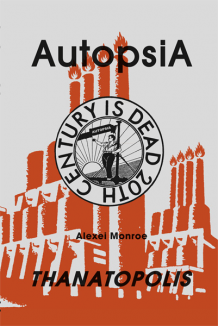




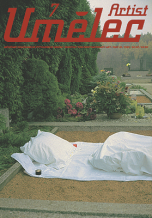
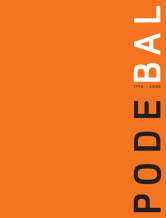
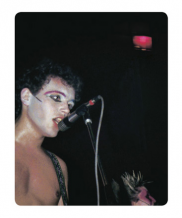
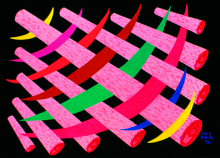


 New book by I.M.Jirous in English at our online bookshop.
New book by I.M.Jirous in English at our online bookshop.
Comments
There are currently no comments.Add new comment